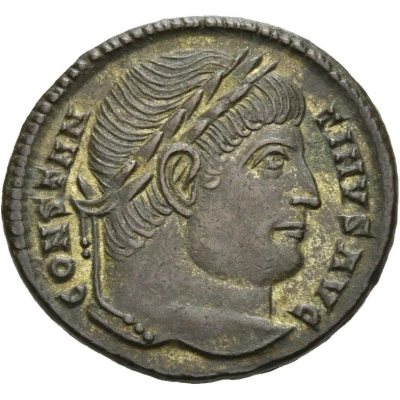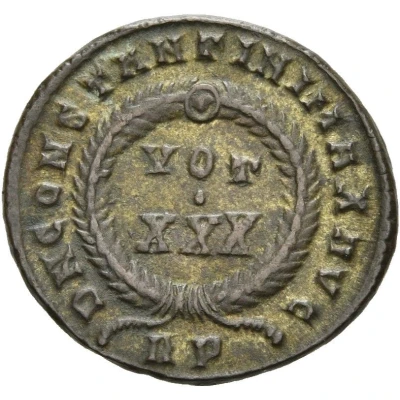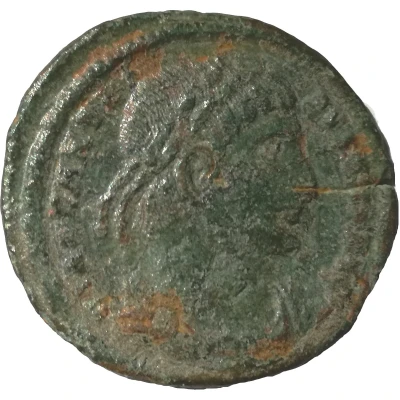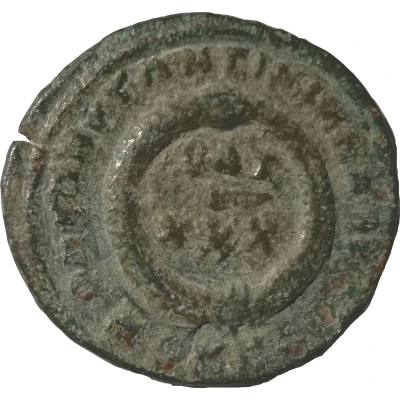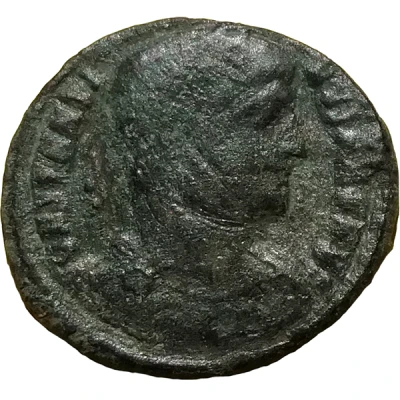
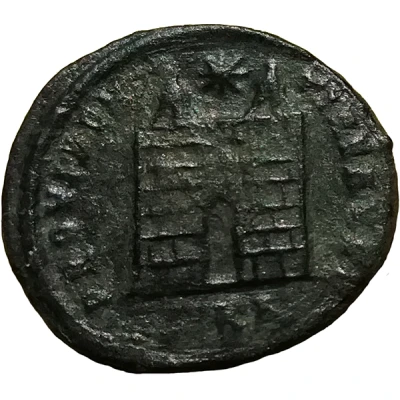

© cobrapel (CC BY-NC)
Nummus - Constantinus I PROVIDENTIAE AVGG; Cyzicus
| Bronze | 2.18 g | 20 mm |
| Issuer | Rome › Roman Empire (27 BC - 395 AD) |
|---|---|
| Emperor | Constantine I (Flavius Valerius Constantinus) (306-337) |
| Type | Standard circulation coin |
| Years | 329-330 |
| Value | Nummus (1⁄7200) |
| Currency | Solidus, Reform of Constantine (AD 310/324 – 395) |
| Composition | Bronze |
| Weight | 2.18 g |
| Diameter | 20 mm |
| Shape | Round (irregular) |
| Technique | Hammered |
| Orientation | Coin alignment ↑↓ |
| Demonetized | Yes |
| Updated | 2024-10-05 |
| Numista | N#201530 |
|---|---|
| Rarity index | 90% |
Reverse
Camp gates, two turrets, no doors, star above.
Script: Latin
Lettering:
PROVIDENTIAE AVGG
SMKA
Translation:
“Providentiae Augustorum”:
To the Providence of the Augusts
Edge
Plain
Interesting fact
The Nummus - Constantinus I (PROVIDENTIAE AVGG; Cyzicus) coin was part of a large-scale currency reform implemented by Emperor Constantine the Great in 306 AD, which introduced a new system of coinage that would be used throughout the Roman Empire for centuries to come. This coin, specifically, was minted in Cyzicus, a city in modern-day Turkey, and features an image of the Roman goddess Providentia on one side and Emperor Constantine on the other. The coin's design and minting location reflect the cultural and political influences of the time, making it a fascinating piece of history.
